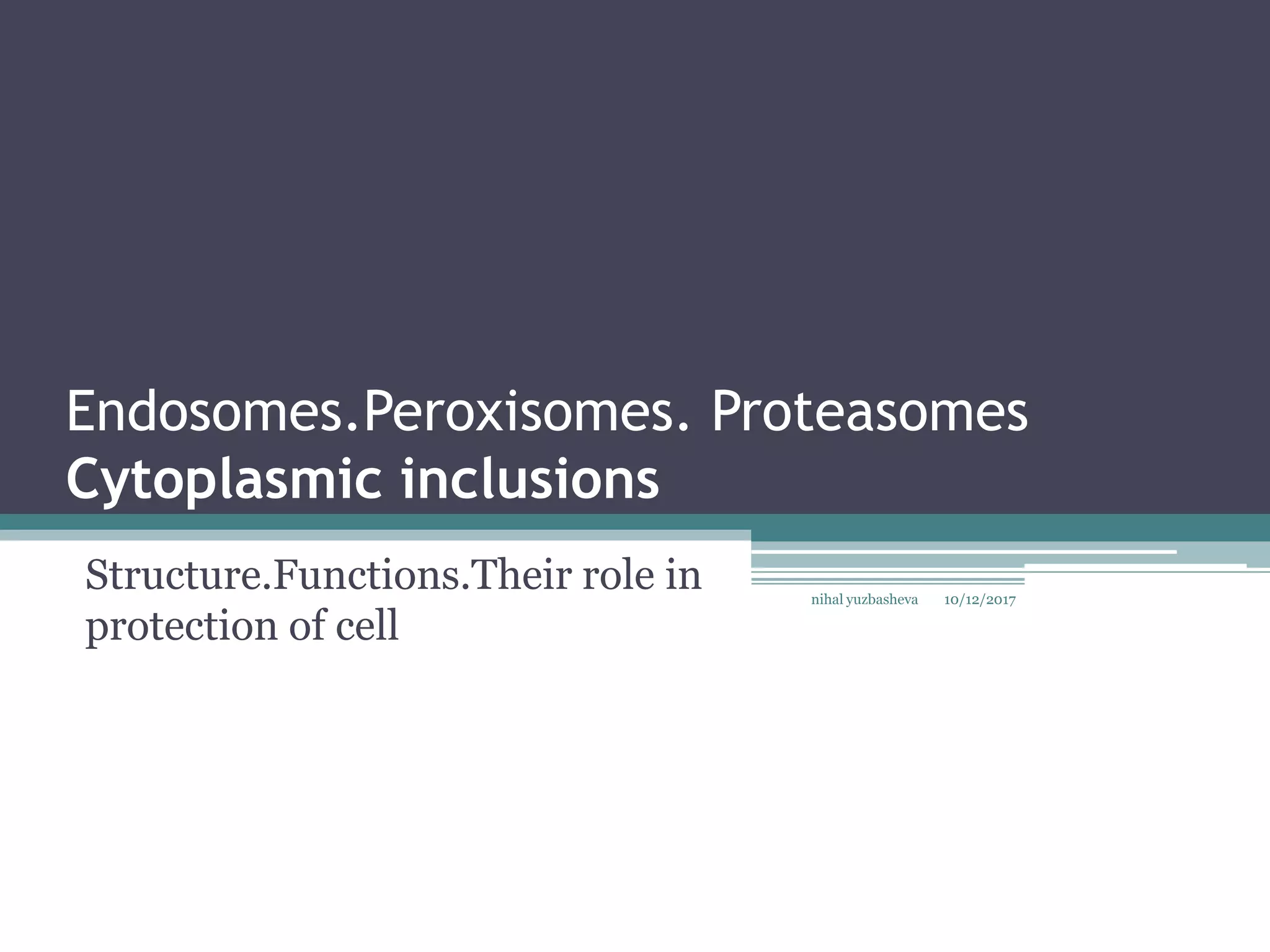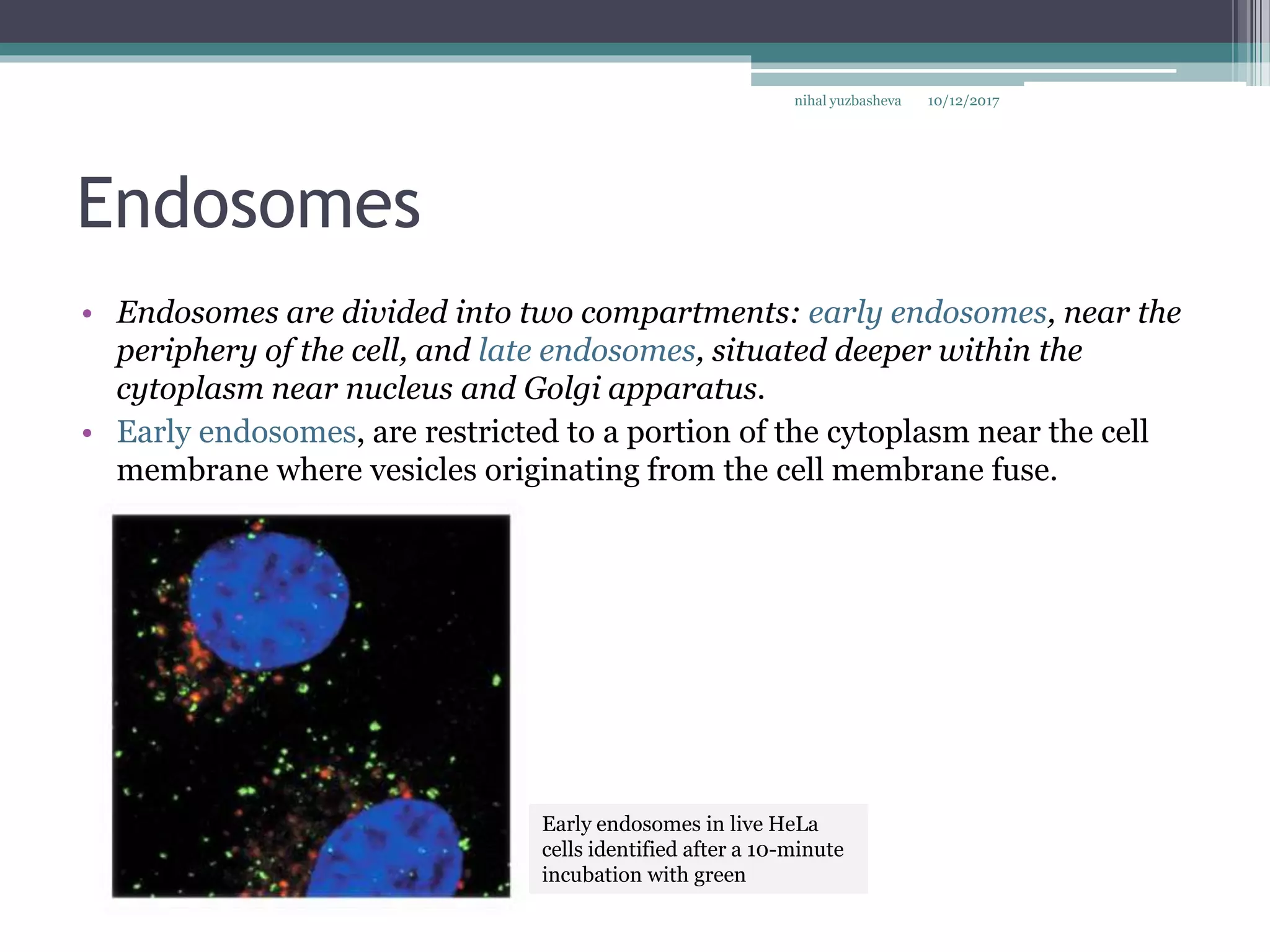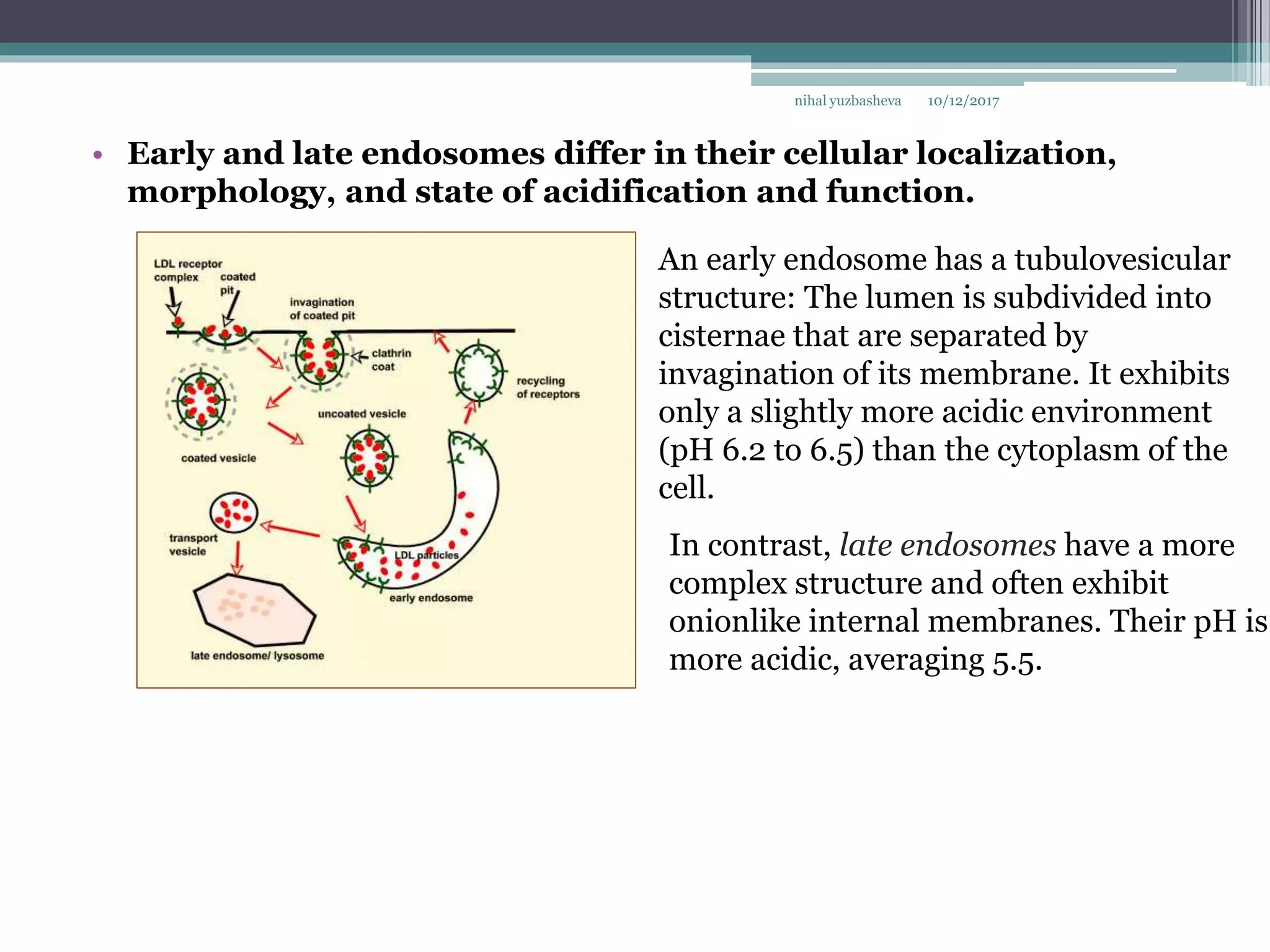This document discusses several cytoplasmic inclusions including endosomes, peroxisomes, proteasomes, and other inclusions. It describes the structure and functions of endosomes, including their role in sorting and transporting materials within cells. Peroxisomes contain oxidative enzymes and are involved in processes like breaking down hydrogen peroxide. Proteasomes are complexes responsible for degrading malformed and tagged proteins. Other inclusions discussed include lipofuscin, hemosiderin, glycogen, and lipid droplets.























